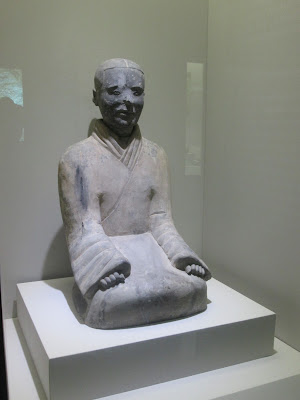Dorasan Station is a modern day ghost town. From Wikipedia (link),
On December 11, 2007, freight trains began traveling north past Dorasan Station into North Korea, taking materials to the Kaesong Industrial Region, and returning with finished goods.
However, on December 1, 2008, the North Korean government closed the border crossing, after accusing South Korea of a confrontational policy. The station is currently served by four trains from Seoul per day for tourists.
We purchased a commemorative "ticket" for 500 won (50 cents), walked out to the platform, and greeted the incoming tourists.
Our guide pointed out the poster of President Bush's visit to Dora Station ...
... and suggested we have fun!
Should he shake from the right ...
... or the left?
How about a pat on the back?
I chuckled at the sign because there is no other way to go.
Next stop: Joint Security Area.
Mahalo,
Kim in Korea






















































